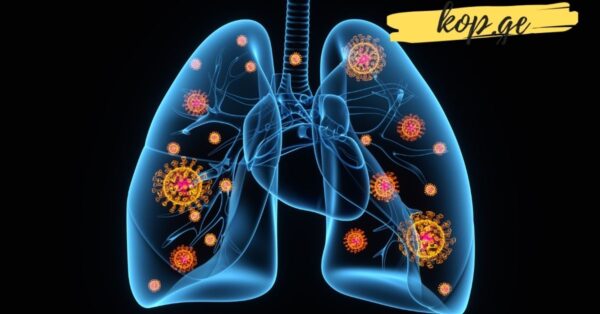5 Warning Symptoms of Silent Pneumonia Everyone Should Know

Most colds and common respiratory infections pass quickly and heal without serious complications. With adequate rest, hydration, and sometimes simple over-the-counter remedies, many people recover in just a few days. Unfortunately, in some cases, what begins as a seemingly harmless upper respiratory infection can progress into something much more serious: pneumonia.
Pneumonia is an infection of the lungs that can range from mild to life-threatening. What makes it particularly dangerous is that it is not always easy to recognize. While some people experience obvious and severe symptoms, others may develop what doctors sometimes call “silent pneumonia” or “walking pneumonia.” This condition can quietly damage the lungs without dramatic warning signs, delaying treatment and increasing the risk of complications.
Being able to identify the early warning symptoms can make a significant difference. If caught in time, pneumonia is treatable, and most people make a full recovery. If ignored, however, it can lead to respiratory failure, sepsis, or even death. Below are five key warning signs of silent pneumonia that everyone should be familiar with. Knowing them could help protect your health—or even save your life.
1. Rapid or Irregular Heartbeat (Tachycardia)
One of the earliest signs that a respiratory infection is worsening is an unusually fast heartbeat. Normally, a healthy adult’s resting heart rate ranges from about 60 to 100 beats per minute. If you notice your pulse consistently racing above 100 beats per minute, especially when you are at rest, this can be a red flag.
Why does this happen? When the lungs are not able to exchange oxygen efficiently due to infection, the heart works harder to circulate oxygen-rich blood throughout the body. As a result, your heart speeds up in an attempt to compensate.
If you measure your pulse and notice persistent tachycardia during a respiratory illness, it’s not something to brush off. A quick consultation with a doctor can help determine whether this is a harmless response to fever—or an early sign that pneumonia is developing.
2. Fever and Chills
Fever is the body’s natural defense mechanism against infection. While many minor colds cause only a mild increase in body temperature, pneumonia often brings on a higher, more persistent fever, often accompanied by shivering or chills.
A sudden spike in temperature can indicate that the infection has moved from the upper airways down into the lungs. It’s important not to rely solely on fever-reducing medications to “mask” the symptoms. While over-the-counter drugs like acetaminophen or ibuprofen can temporarily lower the fever, they do not address the underlying problem.
If your fever climbs above 38.5–39°C (101–102°F) and does not come down easily—or if it is paired with severe chills—it’s a signal to seek medical attention promptly. This is especially crucial for young children, the elderly, or individuals with chronic health conditions, as their immune systems may be less able to fight off lung infections.
3. Chest Pain or Discomfort
Another telltale warning sign of pneumonia is chest pain, particularly pain that worsens when you breathe deeply, cough, or laugh. This pain may feel sharp, stabbing, or simply like a constant ache.
The reason for this is straightforward: when infection spreads into the lungs, the surrounding tissues—including the pleura (the lining around the lungs)—can become inflamed. This inflammation makes every movement of the chest painful.
Sometimes the pain is subtle at first, mistaken for muscle soreness from frequent coughing. But if the discomfort returns repeatedly or intensifies, it may indicate that the infection is spreading deeper into the lung tissue. Do not ignore this symptom—consult a healthcare professional as soon as possible.
4. Persistent, Exhausting, or Bloody Cough
Coughing is the body’s natural reflex to clear mucus and irritants from the respiratory tract. In mild infections, a productive cough (bringing up mucus) can actually be beneficial. But with pneumonia, coughing often becomes relentless and draining, leaving you exhausted rather than relieved.
Warning signs to pay attention to include:
A cough that produces thick, discolored mucus that does not ease your breathing.
Mucus that contains streaks of blood or appears rusty in color.
Coughing fits that worsen at night or interfere with sleep.
The presence of blood-tinged or rust-colored phlegm is particularly alarming, as it suggests that the infection has penetrated into the delicate tissues of the lungs. This is a serious medical symptom that requires immediate evaluation by a doctor.
5. Shortness of Breath and Difficulty Breathing
Perhaps the most concerning symptom of silent pneumonia is shortness of breath, also known as dyspnea. This can feel like a tightness in the chest, shallow breathing, or an inability to take a full breath. Even small activities such as walking across a room or climbing stairs may leave you feeling winded.
When pneumonia progresses to this stage, it means the lungs are struggling to deliver enough oxygen to the bloodstream. Without treatment, oxygen levels in the body can fall dangerously low, leading to dizziness, confusion, or even fainting.
If you ever experience severe shortness of breath—especially if it is accompanied by blue-tinged lips or fingertips—call emergency medical services immediately. This is not a symptom to wait out at home.
Why Silent Pneumonia Is So Dangerous
Silent pneumonia can be deceptive because its early signs may mimic those of a stubborn cold or mild flu. People may continue with their daily routines, thinking they simply need more rest, while the infection quietly worsens in their lungs.
Delaying treatment allows the infection to spread and increases the risk of complications such as:
Lung abscesses
Pleural effusion (fluid buildup around the lungs)
Bacteremia (bacteria spreading into the bloodstream)
Sepsis, a life-threatening immune reaction
Prompt medical evaluation and, if necessary, antibiotics or other treatments can prevent these outcomes.
Final Thoughts
Silent pneumonia is not something to underestimate. By remembering these five warning symptoms—rapid heartbeat, fever and chills, chest pain, exhausting or bloody cough, and shortness of breath—you can recognize the condition earlier and act quickly.
If you or someone you know experiences these signs, don’t wait. Seek medical care immediately. Early diagnosis and treatment not only relieve symptoms faster but also greatly reduce the risk of life-threatening complications.
Your health is your most valuable asset—protect it by staying alert, listening to your body, and never ignoring warning signals.












